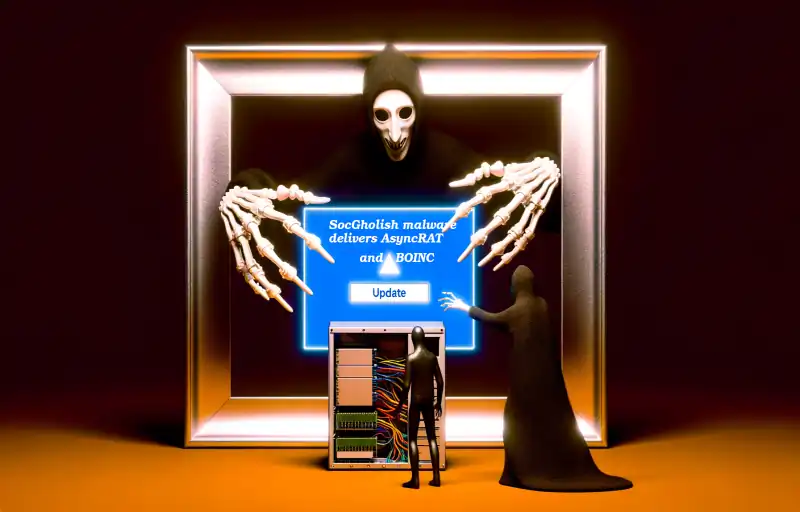
“SocGholish Strikes: Unleashing AsyncRAT and Hijacking BOINC in a Dual-Threat Campaign”
Exploring the SocGholish Malware: From JavaScript Downloader to AsyncRAT and BOINC Deployment
The JavaScript downloader malware known as SocGholish, also referred to as FakeUpdates, has been making headlines for its evolving tactics and increasing sophistication in cyber attacks. Initially recognized for its deceptive methods of masquerading as legitimate software updates, SocGholish has now expanded its arsenal to include the delivery of a remote access trojan named AsyncRAT, alongside an unexpected twist—the deployment of BOINC, a legitimate open-source project widely used for volunteer-based grid computing.
SocGholish operates by luring unsuspecting users with fake browser or software update alerts on compromised websites. Once clicked, these alerts trigger the download of the malware, which then sets the stage for further malicious activities. The use of such social engineering techniques highlights the malware’s reliance on human error, exploiting moments of carelessness or lack of awareness.
Transitioning from its initial infection phase, SocGholish introduces AsyncRAT into the compromised systems. AsyncRAT is a potent threat; it allows attackers remote control over an infected machine, enabling them to steal sensitive information, monitor user activities, and even deploy additional malware. The capabilities of AsyncRAT turn an infected computer into a puppet within the hands of cybercriminals, who can command it to execute a variety of malicious tasks without the user’s knowledge.
Interestingly, the inclusion of BOINC (Berkeley Open Infrastructure for Network Computing) in SocGholish’s recent campaigns adds a new layer to the malware’s impact. BOINC is primarily used to pool computational resources for scientific research projects like SETI@home and climate prediction endeavors. However, in the context of SocGholish, cyber attackers exploit BOINC for their own gains. By installing BOINC on infected machines, attackers can harness the processing power of numerous computers to contribute towards complex computation tasks, likely for cryptocurrency mining or similar resource-intensive activities. This not only slows down the affected systems but also increases electricity usage unbeknownst to the user, all while benefiting the attackers financially.
The dual use of AsyncRAT and BOINC illustrates a disturbing trend in malware development—combining direct control over victim’s systems with the exploitation of those systems’ resources. This strategy not only maximizes the damage and potential profit for the attackers but also complicates mitigation efforts. Victims may detect and remove one component of the malware, unaware that their system remains compromised by other stealthy processes.
For users and organizations, understanding the behavior of threats like SocGholish is crucial. It underscores the importance of maintaining robust cybersecurity measures such as keeping software up to date, educating users on the risks of unknown downloads and suspicious updates, and implementing advanced threat detection tools that can identify and neutralize such multifaceted malware attacks.
As cybercriminals continue to refine their strategies and tools, the digital landscape demands constant vigilance. By staying informed about threats like SocGholish, both individuals and organizations can better prepare themselves against the ever-evolving tactics that threaten their privacy and security in the digital age.














